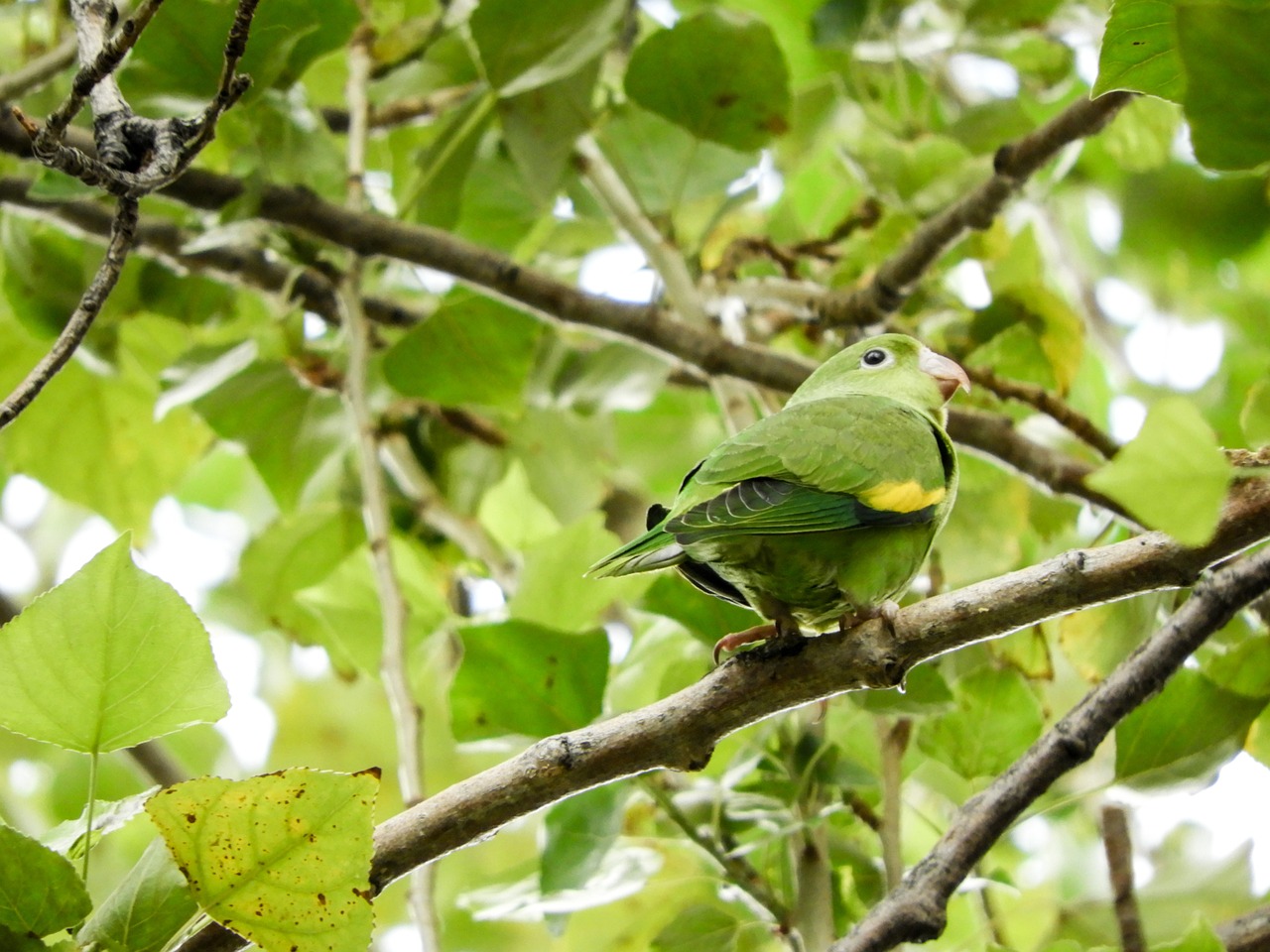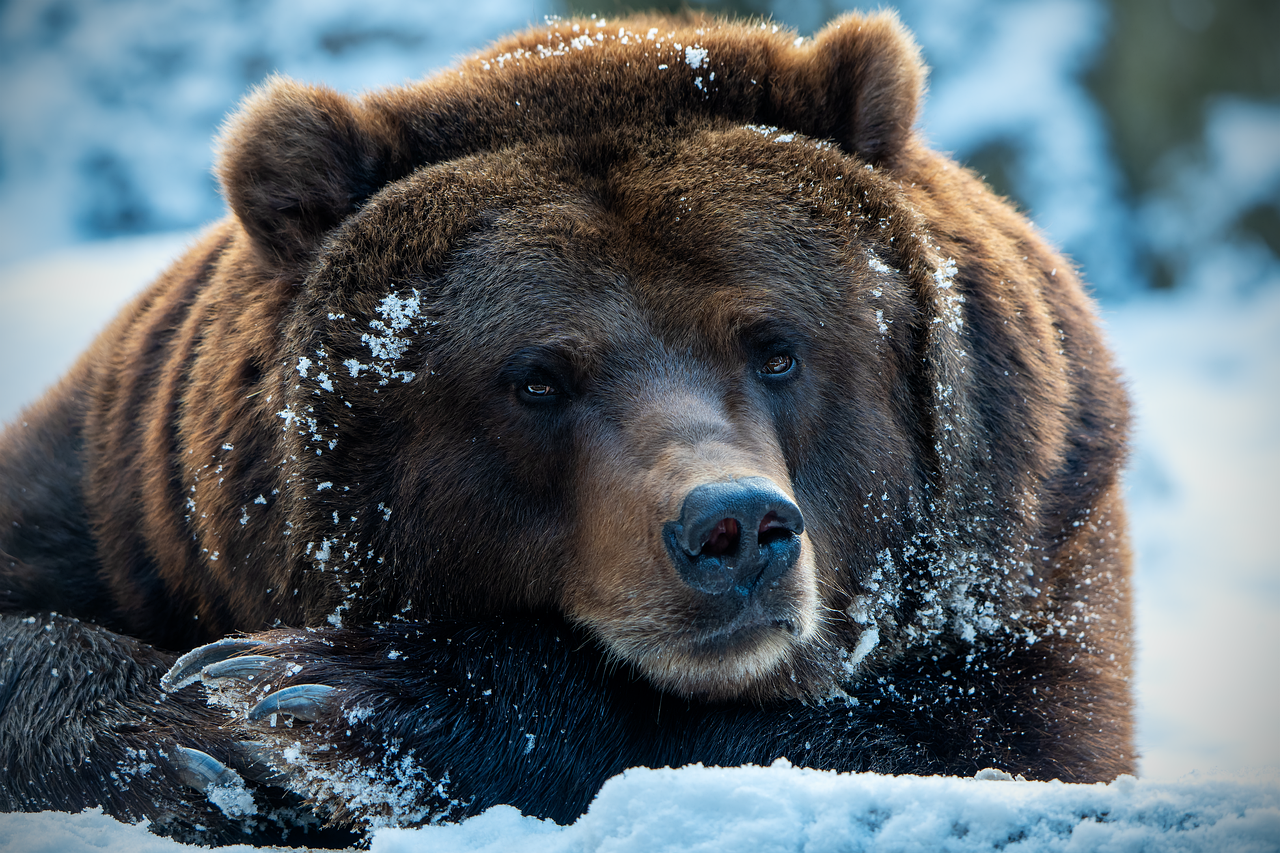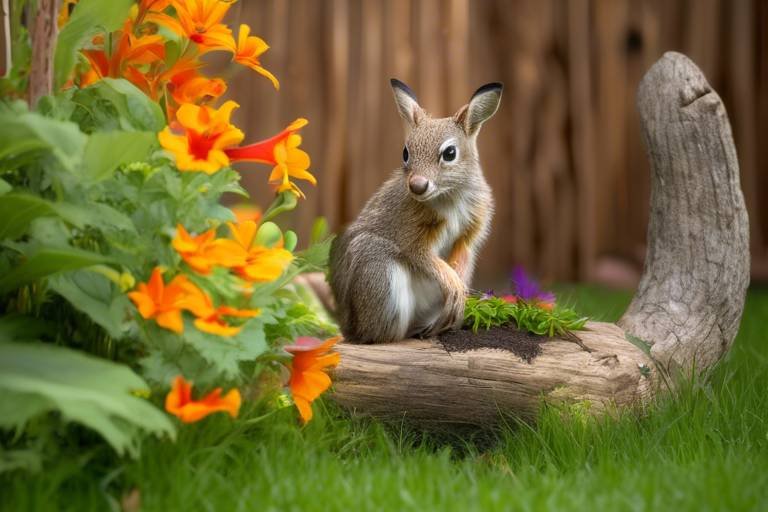10 Ways to Protect Local Wildlife Habitats
Exploring methods to safeguard and preserve the natural environments that support local wildlife populations is crucial for maintaining ecological balance and biodiversity. By taking proactive steps to protect wildlife habitats, we can ensure the well-being of various species and contribute to the overall health of our ecosystems.
One effective way to protect local wildlife habitats is to reduce chemical use in gardening and agriculture. By limiting the use of harmful chemicals such as pesticides and fertilizers, we can prevent contamination and poisoning of wildlife, ensuring their safety and health.
Planting native species is another essential strategy to support local wildlife habitats. Introducing native plants in gardens and green spaces provides food and shelter for wildlife species, promoting their survival and enhancing biodiversity in the ecosystem.
To limit plastic waste and its detrimental impact on wildlife, it is crucial to reduce plastic consumption and ensure proper waste disposal. Wildlife often mistake plastic debris for food, leading to ingestion and entanglement, which can have fatal consequences.
Creating wildlife corridors is a proactive approach to connecting fragmented habitats and facilitating the movement of wildlife populations. These corridors help animals migrate, find food, and seek shelter more easily, contributing to their overall well-being.
Supporting conservation organizations dedicated to wildlife protection and habitat conservation is a meaningful way to contribute to safeguarding local wildlife habitats. Volunteering and donating to these organizations can make a significant difference in conservation efforts.
Monitoring and reporting wildlife activity is essential for early intervention in case of threats or unusual behavior. By keeping track of wildlife sightings and promptly reporting any concerns to authorities, we can ensure timely action to protect wildlife and their habitats.
Reducing light pollution by minimizing artificial light sources at night is crucial for preserving nocturnal wildlife behavior and migration patterns. Excessive artificial light can disrupt natural cycles and navigation abilities of nocturnal animals, impacting their survival.
Implementing sustainable landscaping practices that promote biodiversity and reduce the ecological footprint on local wildlife habitats is key to fostering a healthy environment for wildlife to thrive. Eco-friendly landscaping techniques help create sustainable habitats for various species.
Engaging in community education and outreach initiatives plays a vital role in raising awareness about the importance of protecting wildlife habitats. By educating the community about sustainable practices and conservation efforts, we can foster a culture of respect and coexistence with nature.

Reduce Chemical Use
When it comes to protecting local wildlife habitats, one crucial step is to reduce the use of harmful chemicals. These chemicals, often found in pesticides and fertilizers, can have detrimental effects on wildlife by contaminating their food sources and water supplies. By limiting the use of these chemicals in gardening and agriculture, we can help prevent wildlife from being exposed to toxic substances that can lead to poisoning and even population decline.
Choosing organic and environmentally-friendly alternatives can go a long way in safeguarding the well-being of local wildlife. By opting for natural pest control methods and organic fertilizers, we can create a healthier environment for both wildlife and plants. Additionally, composting organic waste can provide nutrient-rich soil amendments without the need for synthetic chemicals, further reducing the impact on wildlife habitats.
Collaborating with local farmers and gardeners to promote chemical-free practices can also help create a more sustainable ecosystem. Sharing knowledge about the harmful effects of chemicals on wildlife and the environment can inspire others to make conscious choices that benefit both wildlife and human health.
Implementing integrated pest management strategies can effectively control pests without resorting to harmful chemicals. This approach focuses on prevention and natural solutions to manage pest populations while minimizing the impact on wildlife and the surrounding ecosystem.
By educating ourselves and others about the importance of reducing chemical use, we can take significant steps towards safeguarding local wildlife habitats and ensuring a sustainable future for both wildlife and humans.

Plant Native Species
When it comes to protecting local wildlife habitats, one of the most effective methods is to . By incorporating indigenous plants into gardens and green spaces, we can create a supportive environment for the local wildlife population to thrive. Native species are well-adapted to the region's climate, soil, and wildlife, providing essential food and shelter for various species.
Imagine a garden filled with vibrant flowers and lush foliage, attracting butterflies, bees, and birds unique to your area. These native plants not only enhance the beauty of your surroundings but also play a crucial role in sustaining the delicate balance of the ecosystem. They offer a natural habitat for wildlife to forage, nest, and seek refuge, contributing to the overall biodiversity of the region.
Furthermore, planting native species can help combat invasive plants that threaten the native flora and fauna. By restoring the natural vegetation and creating a more hospitable environment for local wildlife, we can safeguard the delicate ecological relationships that support the entire ecosystem.

Limit Plastic Waste
Limiting plastic waste is crucial in protecting local wildlife habitats. Plastic pollution poses a significant threat to wildlife, leading to entanglement, ingestion, and habitat destruction. By reducing plastic consumption and ensuring proper disposal, individuals can make a positive impact on the environment.
One effective way to limit plastic waste is by opting for reusable alternatives to single-use plastics. Using reusable bags, water bottles, and containers can significantly reduce the amount of plastic that ends up in landfills and natural habitats. Additionally, choosing products with minimal or biodegradable packaging can help minimize plastic waste.
Proper recycling practices are also essential in reducing plastic pollution. Sorting and recycling plastic items correctly can prevent them from entering the ecosystem and harming wildlife. Educating oneself and others about the importance of recycling and proper waste management is key to combating plastic pollution.
Participating in beach clean-ups and community litter pick-up events can have a direct impact on reducing plastic waste in local environments. Removing plastic debris from beaches, parks, and waterways not only helps protect wildlife but also contributes to creating cleaner and safer habitats for both animals and humans.
Supporting initiatives that aim to reduce plastic pollution, such as advocating for plastic bans or participating in plastic-free campaigns, can drive positive change at a larger scale. By raising awareness and promoting sustainable practices, individuals can work towards a future where plastic waste is minimized, and wildlife habitats are preserved for generations to come.

Create Wildlife Corridors
Creating wildlife corridors is a crucial strategy in preserving local wildlife habitats. These corridors serve as pathways that connect fragmented habitats, allowing wildlife populations to move freely and access essential resources. By establishing green spaces and corridors, we can mitigate the negative impacts of habitat fragmentation and promote biodiversity within ecosystems.
Imagine a network of interconnected highways for wildlife, enabling them to navigate through urban areas or human developments safely. These corridors not only facilitate the movement of animals but also help in maintaining genetic diversity and ensuring the survival of various species. It's like building bridges between isolated islands, fostering a healthy and sustainable ecosystem.
When planning and implementing wildlife corridors, it is essential to consider the specific needs of local species. By incorporating diverse vegetation and natural features, we can create a suitable environment that attracts a wide range of wildlife. These corridors can also act as shelter belts, protecting animals from predators and adverse weather conditions.
Moreover, wildlife corridors contribute to the overall health of ecosystems by supporting pollinators, seed dispersers, and other essential ecological processes. They play a significant role in enhancing the resilience of wildlife populations to environmental changes and human disturbances. By investing in the creation of wildlife corridors, we are investing in the long-term sustainability of our local ecosystems.

Support Conservation Organizations
Exploring methods to safeguard and preserve the natural environments that support local wildlife populations.
Supporting conservation organizations is a crucial way to ensure the protection of local wildlife habitats. By contributing financially or volunteering your time, you can directly aid in conservation efforts that work towards preserving natural habitats and safeguarding endangered species. These organizations play a vital role in advocating for wildlife protection, conducting research, and implementing conservation projects that benefit the local ecosystem.

Monitor and Report Wildlife Activity
Monitoring and reporting wildlife activity is a crucial aspect of protecting local habitats and ensuring the well-being of wildlife populations. By actively observing and documenting the behavior and presence of various species, individuals can contribute valuable data that aids in conservation efforts. Whether it's tracking the movements of migratory birds, noting the nesting habits of endangered species, or identifying potential threats to wildlife, monitoring plays a significant role in safeguarding our natural environment.
One effective way to monitor wildlife activity is through the use of trail cameras strategically placed in key locations. These cameras can capture footage of animals in their natural habitat without causing disturbance, providing valuable insights into their behavior and population trends. By analyzing this data, researchers and conservationists can make informed decisions to protect vulnerable species and their habitats.
Reporting wildlife activity involves sharing observations with relevant authorities, such as local conservation organizations or wildlife agencies. By promptly notifying experts about unusual sightings, potential conflicts, or environmental hazards, individuals can help prevent harm to wildlife and facilitate timely intervention when needed. This collaborative approach ensures that wildlife conservation efforts are proactive and responsive to emerging threats.
Furthermore, citizen science initiatives empower individuals to contribute to wildlife monitoring and reporting efforts. By participating in programs that collect data on species abundance, distribution, and behavior, volunteers can make a meaningful impact on conservation research. Sharing observations through online platforms or community networks enhances collective knowledge and promotes a deeper understanding of local wildlife populations.

Reduce Light Pollution
Reducing light pollution is crucial in safeguarding the natural behaviors and habitats of nocturnal wildlife. Excessive artificial light at night can disrupt the natural rhythms of various species, affecting their feeding, mating, and migration patterns. By minimizing light pollution, we can create a more conducive environment for these creatures to thrive.
One effective way to reduce light pollution is by using shielded fixtures that direct light downwards and reduce glare. This helps to focus the light where it is needed, such as walkways or specific areas, without unnecessarily illuminating the entire surroundings. By controlling the direction of light, we can limit its impact on wildlife while still ensuring adequate visibility for human activities.
Additionally, implementing motion sensor lights or timers can help regulate the usage of outdoor lighting. By only activating lights when necessary, such as during movement or specific times, we can further minimize light pollution and energy consumption. This approach not only benefits wildlife but also promotes energy efficiency and cost savings for property owners.
Community engagement plays a vital role in addressing light pollution. Educating residents about the negative effects of excessive artificial light and promoting responsible lighting practices can lead to widespread awareness and action. Encouraging the use of warm-colored, low-intensity bulbs for outdoor lighting and advocating for light shields or curtains can significantly mitigate light pollution in residential areas.

Implement Sustainable Landscaping Practices
Sustainable landscaping practices play a crucial role in preserving local wildlife habitats and promoting biodiversity. By incorporating eco-friendly techniques, individuals can create beautiful outdoor spaces while minimizing negative impacts on the environment. One effective method is rainwater harvesting, which involves collecting and storing rainwater for irrigation purposes, reducing the reliance on potable water sources. This not only conserves water but also prevents runoff pollution in nearby water bodies.
Another essential aspect of sustainable landscaping is native plant selection. Choosing indigenous plants that are well-adapted to the local climate and soil conditions can significantly benefit wildlife by providing natural food sources and habitats. These plants require less maintenance, reducing the need for chemical fertilizers and pesticides that can harm both wildlife and the environment.
Integrating pollinator-friendly gardens into landscaping designs is also a sustainable practice that supports local wildlife populations. By including flowering plants that attract bees, butterflies, and other pollinators, individuals can contribute to the health of ecosystems and promote biodiversity. Additionally, creating wildlife-friendly habitats such as birdhouses, bat boxes, and insect hotels can provide shelter and nesting sites for various species.
Composting organic materials like kitchen scraps and yard waste is another sustainable landscaping practice that reduces waste sent to landfills and enriches the soil with nutrients. By composting, individuals can improve soil quality, promote plant growth, and support a healthy ecosystem for wildlife. Implementing drought-tolerant landscaping is also beneficial, as it reduces the need for excessive watering and helps conserve water resources.
Furthermore, incorporating permeable paving materials in driveways and walkways allows rainwater to infiltrate the soil instead of creating runoff that can carry pollutants into waterways. This helps prevent erosion, reduces flooding risks, and supports groundwater recharge. Sustainable landscaping practices not only benefit local wildlife but also contribute to a more resilient and environmentally friendly community.

Engage in Community Education and Outreach
Engaging in community education and outreach plays a crucial role in raising awareness about the significance of protecting local wildlife habitats. By actively involving the community in conservation efforts, individuals can develop a deeper appreciation for the natural world around them and understand the impact of their actions on wildlife populations.
One effective way to engage in community education is through organizing workshops, seminars, and informational sessions. These events can cover topics such as the importance of biodiversity, the role of wildlife habitats in maintaining ecological balance, and practical tips for supporting local wildlife.
Additionally, collaborating with schools, local organizations, and community groups can help reach a wider audience and instill a sense of responsibility towards wildlife conservation. By working together, communities can implement sustainable practices and initiatives that benefit both wildlife and the environment.
Utilizing social media and online platforms is another powerful tool for community outreach. Sharing educational content, success stories, and conservation updates can inspire individuals to take action and become advocates for wildlife protection in their own neighborhoods.
Furthermore, creating interactive experiences such as nature walks, birdwatching tours, or habitat restoration projects can foster a direct connection between community members and local wildlife. These hands-on activities not only educate but also encourage active participation in conservation efforts.
By engaging in community education and outreach, individuals can become ambassadors for wildlife protection, influencing others to adopt sustainable practices and contribute to the preservation of local habitats for future generations.
Frequently Asked Questions
- How can reducing chemical use help protect local wildlife habitats?
Reducing chemical use can prevent contamination of soil and water sources, which are essential for the health of wildlife populations. By limiting the use of harmful pesticides and fertilizers, we can create a safer environment for animals to thrive in their natural habitats.
- Why is planting native species important for local wildlife?
Planting native species provides food and shelter that local wildlife species are adapted to, promoting biodiversity and supporting the ecosystem. Native plants also require less maintenance and are better suited to the local climate, contributing to a sustainable habitat for wildlife.
- How does limiting plastic waste benefit wildlife?
Limiting plastic waste helps prevent animals from ingesting or getting entangled in plastic debris, which can be harmful or fatal to wildlife. Proper disposal and reducing plastic consumption can safeguard wildlife and their habitats from the negative impacts of pollution.
- What are wildlife corridors and why are they important?
Wildlife corridors are pathways that connect fragmented habitats, allowing animals to move between different areas safely. These corridors help maintain genetic diversity, enable migration, and reduce the risk of isolation for wildlife populations, supporting their long-term survival.
- How can individuals support wildlife conservation organizations?
Individuals can support wildlife conservation organizations by donating, volunteering, or participating in conservation projects. By contributing to these organizations, individuals can help fund critical conservation efforts and initiatives that protect wildlife habitats.



















